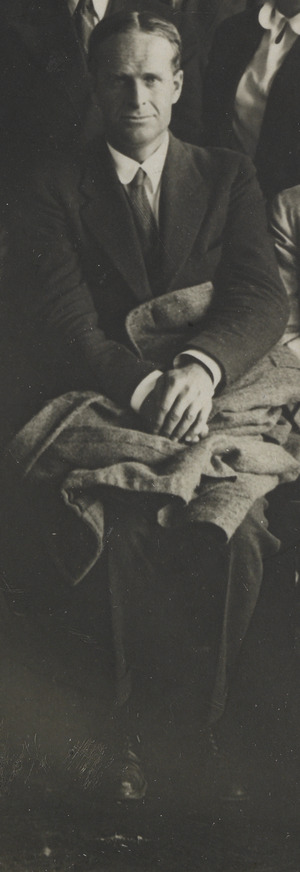James Waddell Alexander II facts for kids
Quick facts for kids
James Waddell Alexander II
|
|
|---|---|

At a topological conference in Moscow, 1935
|
|
| Born | September 19, 1888 |
| Died | September 23, 1971 (aged 83) |
| Known for | Algebraic topology |
| Awards | Bôcher Memorial Prize (1928) |
| Scientific career | |
| Fields | Topology |
| Doctoral advisor | Oswald Veblen |
James Waddell Alexander II (September 19, 1888 – September 23, 1971) was an important mathematician and topologist. He lived and worked before and during World War II. He was part of a famous group of mathematicians at Princeton University. This group included Oswald Veblen and Solomon Lefschetz.
Alexander was one of the first people to join the Institute for Advanced Study. He worked there from 1933 to 1951. He was also a professor at Princeton University from 1920 to 1951.
Contents
Early Life and Interests
James Alexander was born on September 19, 1888. His birthplace was Sea Bright, New Jersey. He came from a well-known family in Princeton. His father, John White Alexander, was a famous painter. His mother was Elizabeth Alexander.
James was the only child. His family was quite wealthy. This allowed him to meet many important people.
On January 11, 1918, he married Natalia Levitzkaja. She was from Russia. They had two children together.
A Love for Climbing
Until 1937, James and his family often visited Chamonix, France. This area is famous for its mountains. Alexander was a skilled mountaineer. He climbed many tall mountains. These included peaks in the Swiss Alps and the Rocky Mountains in Colorado.
When he was in Princeton, he enjoyed climbing university buildings. He always left his office window open. It was on the top floor of Fine Hall. This way, he could climb up the building to get inside!
Education and Military Service
Alexander studied at Princeton University. He earned his Bachelor of Science degree in 1910. He continued his studies there. He received his Masters of Arts degree in 1911. Then, he earned his doctoral degree in 1915.
During World War I, Alexander helped the United States Army. He worked with the technical staff. He served overseas. He finished his military service as a Captain.
Contributions to Mathematics
James Alexander was a leader in a field called algebraic topology. This area of math uses tools from algebra to study shapes. He built on the ideas of another mathematician, Henri Poincaré. Poincaré had developed something called homology theory. Alexander helped to expand this.
Alexander also started a new area called cohomology theory. This field grew after he defined a concept called a cochain. For his important work, he received the Bôcher Memorial Prize in 1928.
Understanding Knots
Alexander also helped start knot theory. This is a branch of mathematics that studies mathematical knots. These are like knots you tie in a rope, but without loose ends. He invented something called the Alexander invariant. This was a way to describe a knot mathematically. It helped mathematicians tell different knots apart.
From this invariant, he created the first polynomial knot invariant. This was a special kind of mathematical expression. It could help identify knots.
With another mathematician, Garland Briggs, Alexander also described how knots change. They showed how certain moves, now called Reidemeister moves, affect a knot. They also found a way to calculate knot properties from a knot diagram.
Alexander was chosen to be a member of important groups. These included the American Philosophical Society. He was also part of the American Academy of Arts and Sciences.
Later Life and Privacy
Towards the end of his life, Alexander became very private. He was known for his political views. Because he was famous, he drew attention during the McCarthyism era. This was a time when people were very suspicious of others' political beliefs. This made him withdraw even more from public life. He was not seen in public after 1954. His last public appearance was to sign a letter supporting J. Robert Oppenheimer.
Death and Legacy
James Alexander passed away on September 23, 1971.
A famous climbing route in the Rocky Mountain National Park is named after him. It is called Alexander's Chimney.
See also
- Alexander horned sphere
- Alexander polynomial
- Alexander cochain
- Alexander–Spanier cohomology
- Alexander duality
- Alexander's trick

